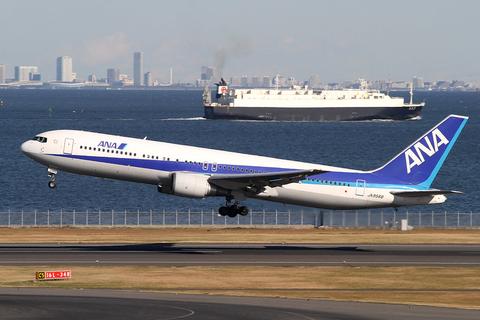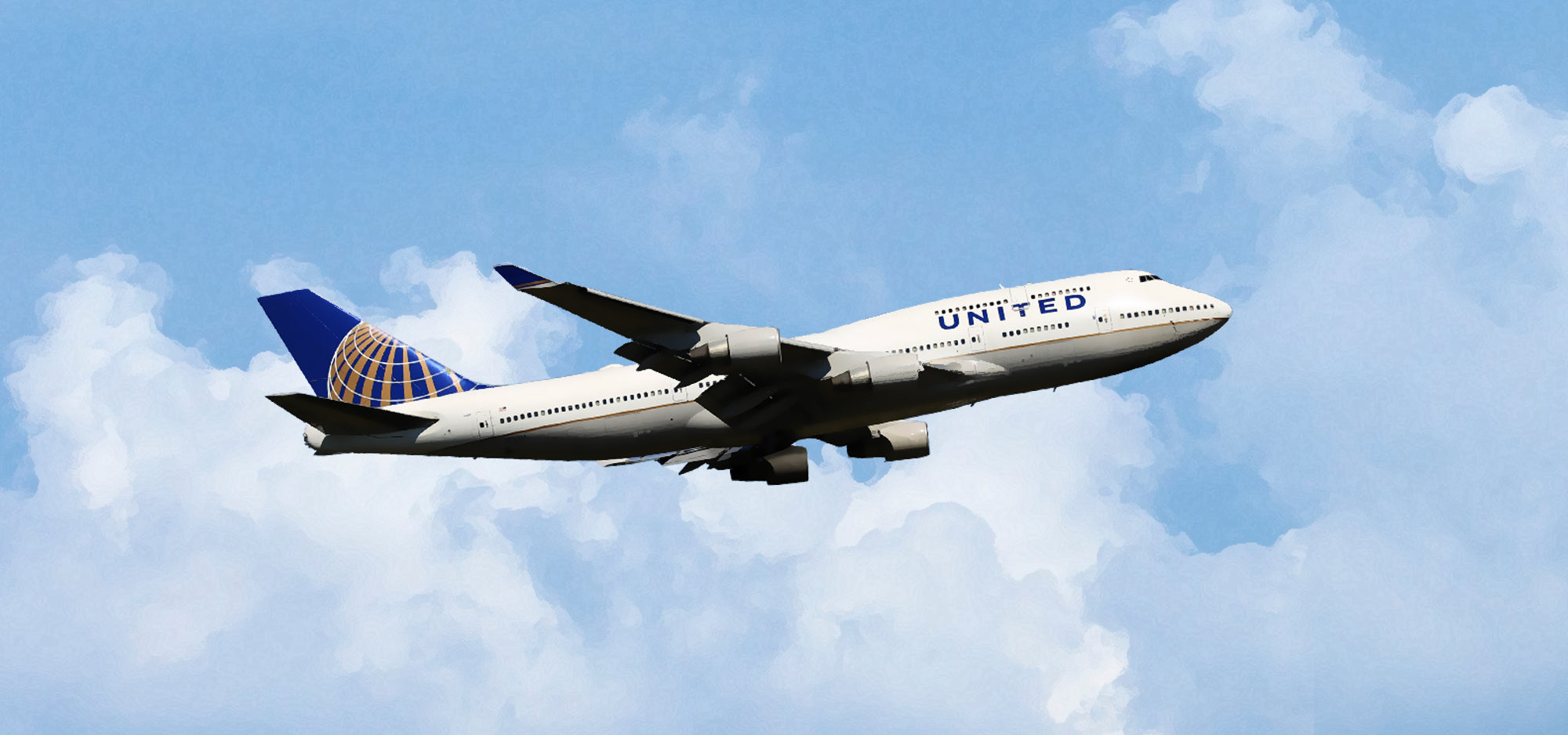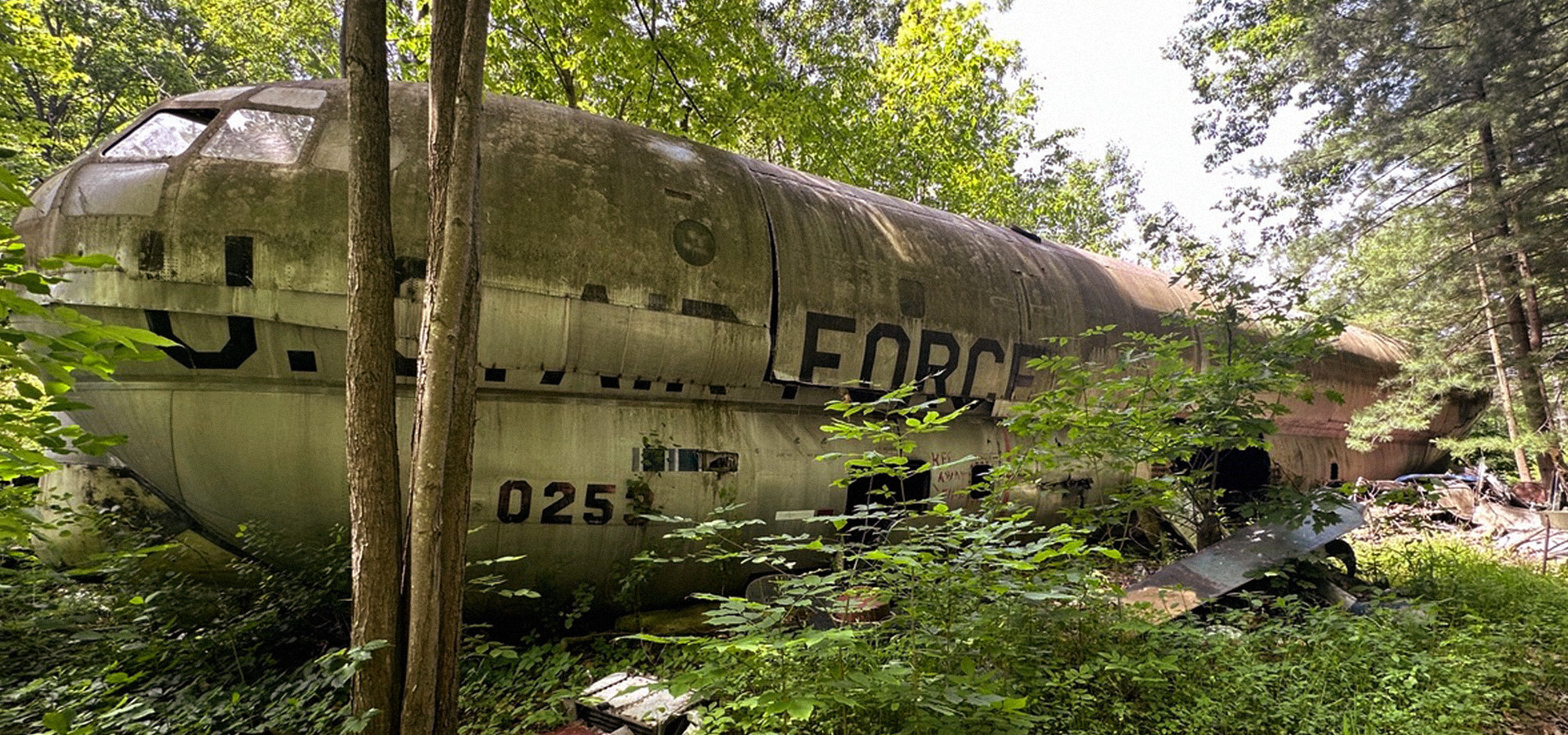ANA grew from a small helicopter and cargo company to Japan’s largest airline over the past 68 years, flying mainly Boeing aircraft in a variety of versions. In 1985, it added 15 Boeing 767-300s in Japan’s largest single purchase of commercial aircraft from the U.S. in a whopping $1.8 billion deal. One of these $71 million dollar planes was JA8568. Grab an ANA Boeing 767-300 PlaneTag for your collection.

What is the Boeing 767?
The Boeing 767 is a wide-bodied twin-aisle, twin-engine jetliner that first entered service in 1982 with United Air Lines. It has a common type rating and crew qualification as the 757, which gives airlines with both types of planes greater flexibility in assigning flight crews and operating logistics. They share the same flight crew operating instructions, maintenance schedules, inspections, and manuals. Between 1981 and now, Boeing delivered over 1,100 of the 767; in fact, it is the first twinjet wide-body type to reach 1,000 aircraft delivered.
The 767-300 was introduced in September 1983. It was longer by over 21 feet and had a 20% higher seating capacity than earlier versions.

767 At A Glance
- Overall Length 54.9 m
- Wing Span 50.9 m
- Tail Height 15.9 m
- Typical Cruise Speed 870 km/h
- Cruising range 10,820 km
- Maximum operation altitude 13,100 m
- Maximum take off weight 181.4 ton
- Engines CF6-80-C2B6
- Thrust of engine 27,900 kg X 2
- Maximum Fuel Capacity 90 kl
All Nippon Airways

ANA was founded in 1952, as Japan Helicopter & Aeroplane Transport Co. Ltd., providing helicopter and transport services. By the end of 1953, they were authorized to operate charter and scheduled passenger service. They changed their name to ALL NIPPON AIRWAYS Co., Ltd.(ANA) in December 1957. Within 10 years of their start, they had carried 1 million passengers. By 1969, they had carried 5 million, steadily climbing to 45 million passengers by 2004. They rose from their small beginnings to now the largest airline in Japan, serving more than 42 million passengers annually.
The mainstay of its early days was the Douglas DC-3. With the introduction of DC-3 service in 1955, it increased the seating capacity two-fold, requiring the debut of cabin attendants. It began using its first jet aircraft, the Boeing 727-100, in May 1964. ANA grew as it added newer, faster planes with more capacity, with the ability to fly long haul and international routes to Asia, Europe, North America and beyond. Today the airline flies a mixture of Airbus and Boeing jetliners, with the Airbus A321 and A380 as the newest aircraft in its fleet. See ANA’s fleet history.
Boeing Vs Airbus: Japan’s Largest Purchase
In December 1985, ANA announced that it was buying 15 Boeing 767-300 jetliners, with an option for 10 additional planes. The deal was worth approximately $1.8 billion, which was, at the time, Japan’s largest single purchase of commercial aircraft from the U.S.
ANA chose Boeing over Airbus’s A300-600 aircraft in a hard-fought contest to add new 300-seat jets to their fleet. ANA operated 94 aircraft on Japan-based routes and planned to add overseas service in 1986. The choice was made because ANA already had 21 767-200s, which made the initial costs lower due to compatibility with the existing fleet, as well as an easier conversion for use on the planned overseas routes. The commonalities in training and parts between the 767-200 and 767-300s made it a sensible choice.
The cost was $71 million per plane, with delivery from Boeing to begin late 1987 and continuing for 9 years. ANA followed after Delta Airlines and Japan Air Lines as the third carrier to order the 767-300. JA8568 was one of the planes ordered and was delivered to ANA in September 1993.
JA8568
The career of JA8568 began and ended with ANA. She was delivered in September 1993 and withdrawn from use in November 2018, after 25 years of service. During that time, traveling aboard ANA’s 767 regional business class offered delicious food, state-of-the-art (at the time) in flight entertainment, cradle seats that reclined, and attentive service by cabin attendants. Her career was generally uneventful, except for an incident in June 2018, when its crew initiated an emergency descent due to the loss of cabin pressure. In December 2018, she changed operators to ANA Trading Company, and her number changed to N113TU. She was stored at San Bernardino International Airport (SBI), in Southern California. ANA still operates a number of 767s, including some converted to cargo planes.
Last Flight
MotoArt Finds A $71 Million Dollar Plane

MotoArt’s owner Dave Hall first noticed the 767 at SBI. “We were first attracted to the gorgeous colors of its livery. Even while being scrapped, I could see the rich blues and knew our customers and friends would really love it too,” said Hall. “ANA has such an interesting history and this plane was part of one of Japan’s largest purchase ever.”

The team transported several sections of the plane back to MotoArt Studios in Torrance, CA to begin their own process of upcycling the airplane skin into PlaneTags.

All PlaneTags are handmade near Los Angeles, in Southern California. The original aircraft skin is removed by hand and cut into smaller sections.


The smaller pieces are then individually hand stamped into the familiar oval shape, a shape that PlaneTags has used since Dave Hall first envisioned them almost 20 years ago. The PlaneTags are then cleaned and polished by hand, etched, and assembled.

ANA 767 PlaneTags

The results of this craftsmanship are handsome blue, white, and combo PlaneTags. They are numbered up to 7500, with a limited amount of combo colors. “If you love this blue like we do, get one right away,” says Hall. “We always sell out of the prettiest colors first.” Add one to your collection or give as the perfect gift for your favorite aviation enthusiast or pilot.


MotoArt 20th Anniversary
Join MotoArt PlaneTags as we celebrate all year leading up to our 20th anniversary. We are adding many new aircraft to our virtual Encyclopedia of Airplanes, and have some exciting things planned. Sign up for our mailing list and receive an immediate discount on your next purchase, regular e-blasts with our newest products and incredible discounts on PlaneTags you won’t find anywhere else.
Follow PlaneTags
Follow MotoArt






Share:
Promo Codes For PlaneTags
The Handley Page Victor: A V-Bomber That Delivered